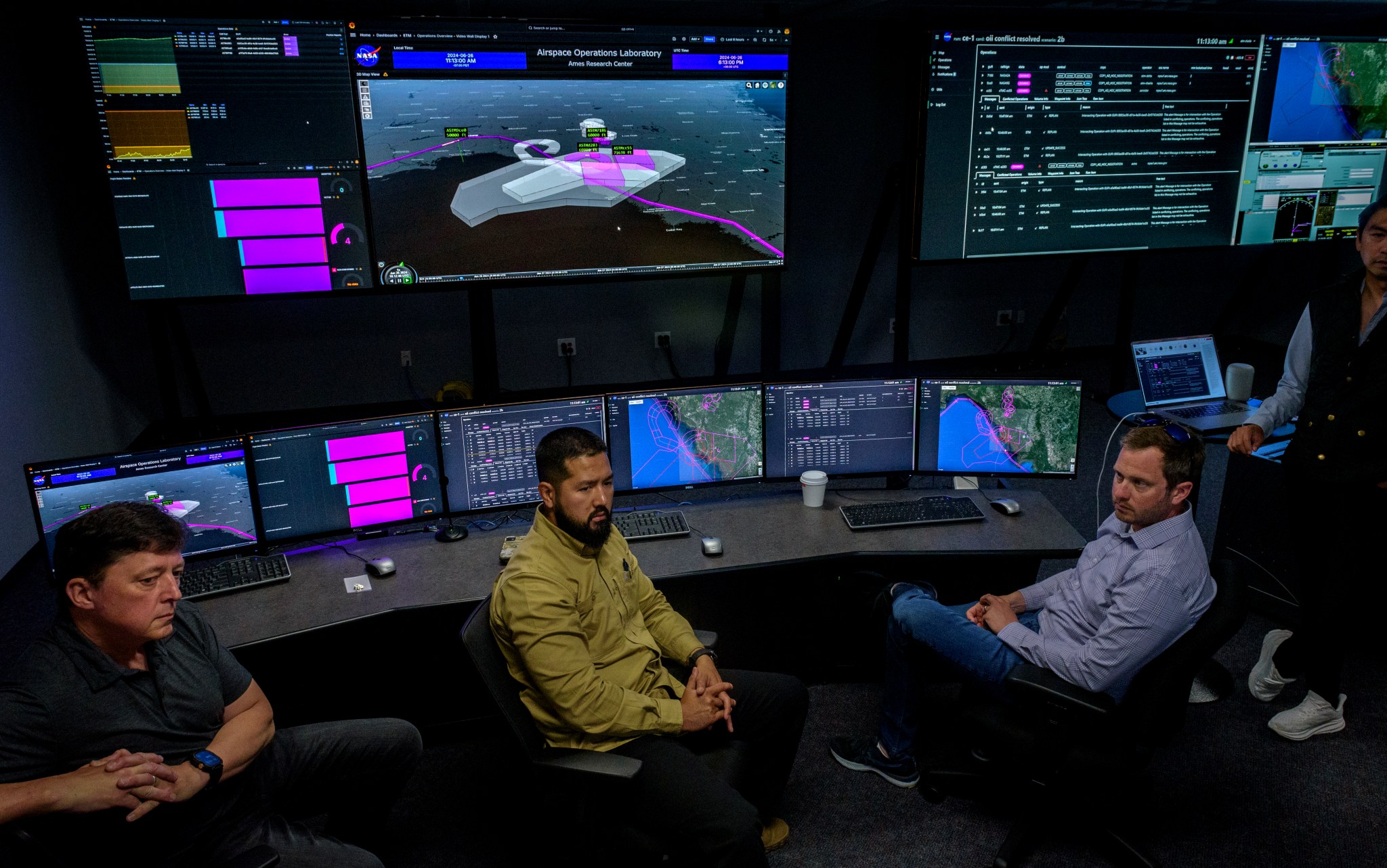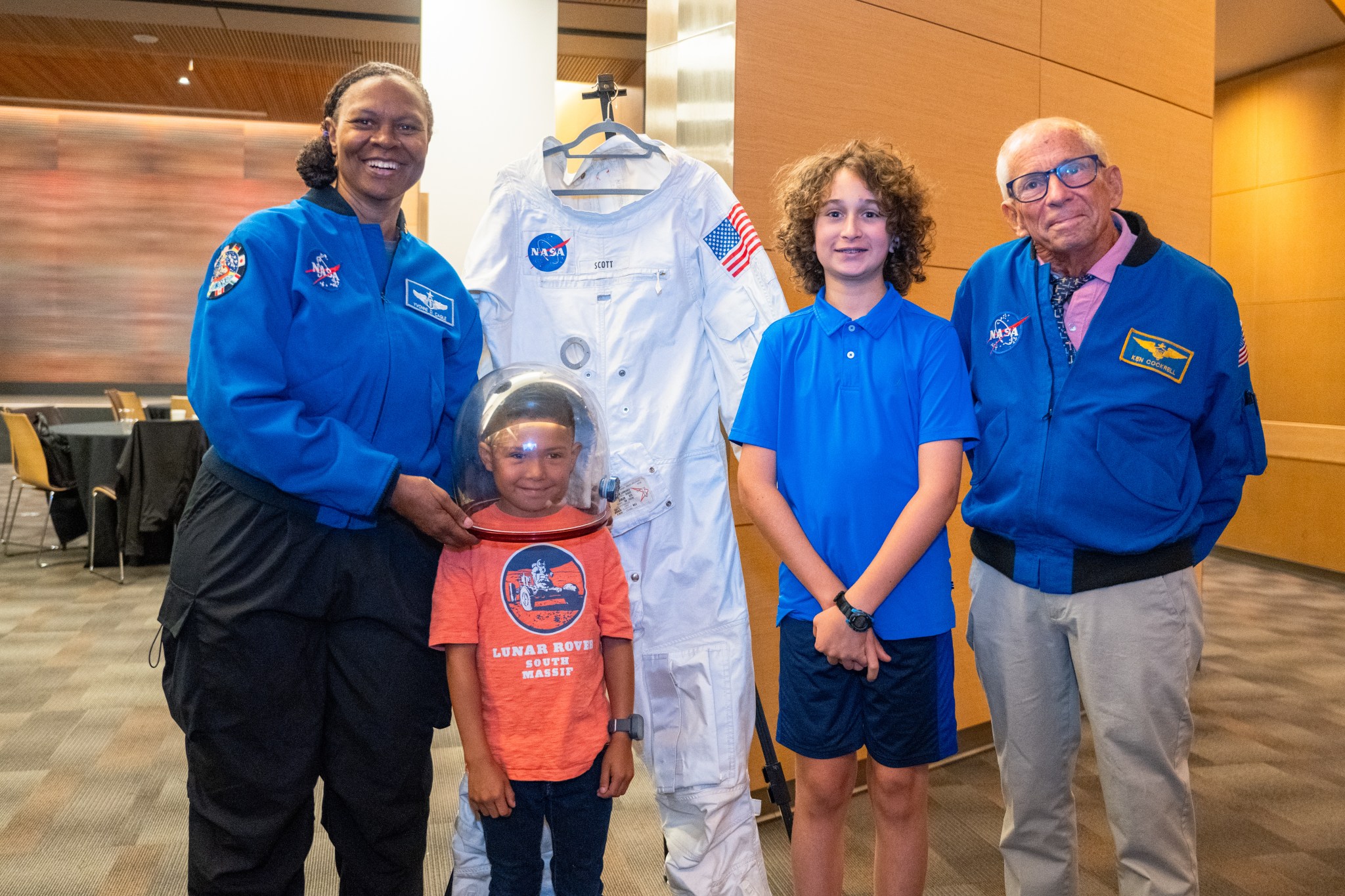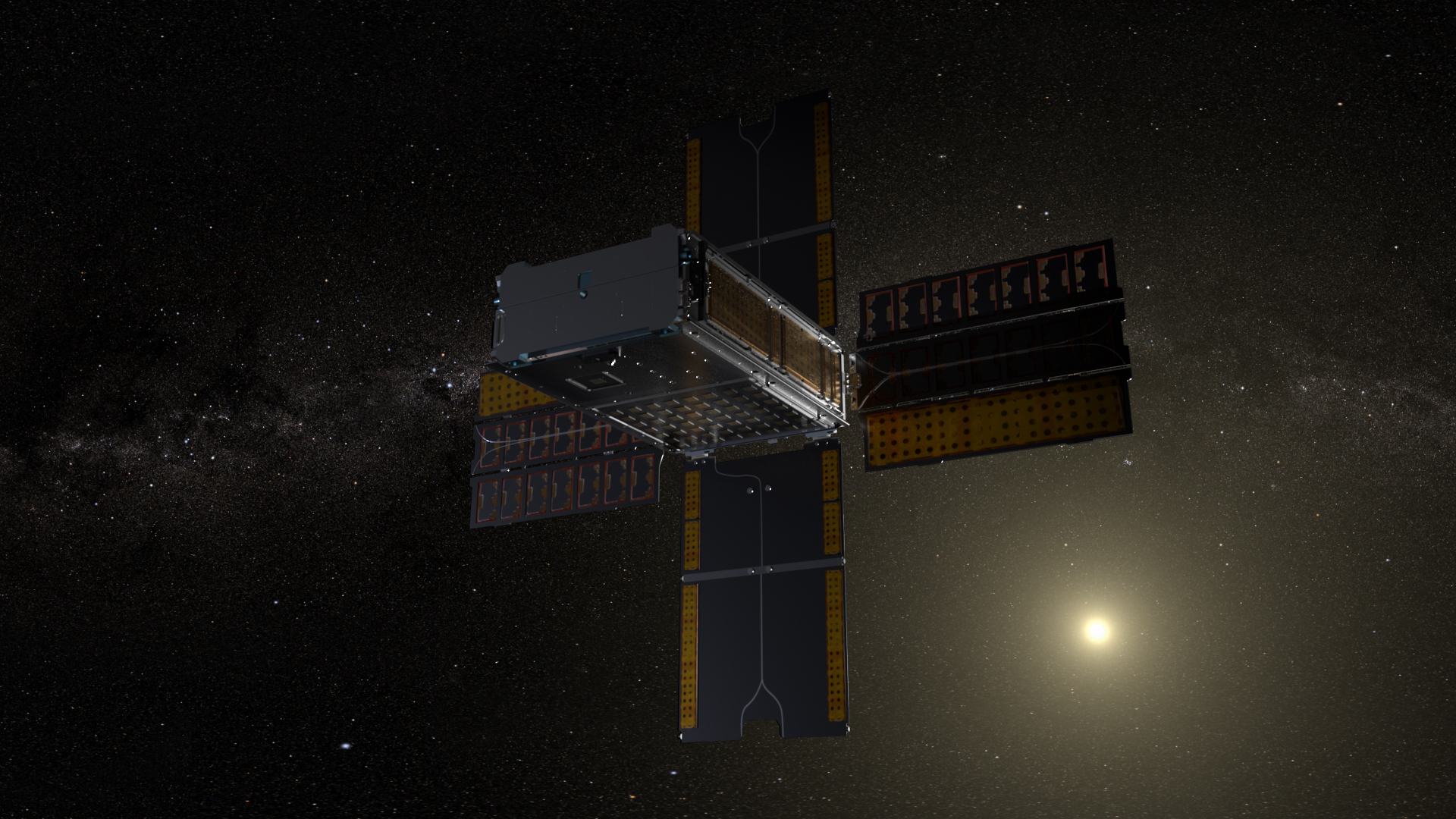Dr. Eugene Tu, center director at NASA’s Ames Research Center in California’s Silicon Valley, presents Representative Anna Eshoo with a replica of the Pioneer plaque during a recognition event for her 32 years of public service. NASA/Brandon Torres Navarrete On Oct. 29, NASA’s Ames Research Center in California’s Silicon Valley hosted a gathering to recognize Representative Anna G. Eshoo for her 32 years of distinguished public service and her enduring support for the agency. During the event, Dr. Eugene Tu, center director at Ames, presented the Congresswoman with the Pioneer…
Read MoreTag: Ames Research Center
NASA and Partners Scaling to New Heights
3 min read Preparations for Next Moonwalk Simulations Underway (and Underwater) NASA and partners from Aerostar and AeroVironment discuss a simulation of a high-altitude air traffic management system for vehicles flying 60,000 feet and above in the Airspace Operations Lab (AOL) at NASA’s Ames Research Center in California’s Silicon Valley. NASA/Don Richey NASA, in partnership with AeroVironment and Aerostar, recently demonstrated a first-of-its-kind air traffic management concept that could pave the way for aircraft to safely operate at higher altitudes. This work seeks to open the door for increased internet…
Read MoreSail Along with NASA’s Solar Sail Tech Demo in Real-Time Simulation
Unable to render the provided source NASA invites the public to virtually sail along with the Advanced Composite Solar Sail System‘s space journey using NASA’s “Eyes on the Solar System” visualization tool, a digital model of the solar system. This simulation shows the real-time positions of the planets, moons, and spacecraft – including NASA’s Advanced Composite Solar Sail System. Solar sails use the pressure of sunlight for propulsion, angling toward or away from the Sun so that photons bounce off the reflective sail to push a spacecraft. This eliminates the need for heavy…
Read MoreNASA Awards Aerospace Research, Technology, and Simulations Contract
Credit: NASA NASA has selected Metis Technology Solutions Inc. of Albuquerque, New Mexico, to provide engineering services as well as develop and maintain software and hardware used to conduct simulations for aerospace research and development across the agency. The Aerospace Research, Technology, and Simulations (ARTS) contract is a hybrid cost-plus-fixed-fee and firm-fixed-price contract with an indefinite-delivery/indefinite-quantity component and has a maximum potential value of $177 million. The performance period begins Sunday, Dec. 1, 2024, with a one-year base period, and options to extend performance through November 2029. Under this contract,…
Read MoreNASA Astronauts, Leadership Visit Children’s Hospital, Cancer Moonshot Event
2 min read Preparations for Next Moonwalk Simulations Underway (and Underwater) NASA astronaut Yvonne Cagle and former astronaut Kenneth Cockrell pose with Eli Toribio and Rhydian Daniels at the University of California, San Francisco Bakar Cancer Hospital. Patients gathered to meet the astronauts and learn more about human spaceflight and NASA’s cancer research efforts. NASA/Brandon Torres Navarrete NASA astronauts, scientists, and researchers, and leadership from the University of California, San Francisco (UCSF) met with cancer patients and gathered in a discussion about potential research opportunities and collaborations as part of…
Read MoreNASA’s BioSentinel Studies Solar Radiation as Earth Watches Aurora
Illustration of NASA’s BioSentinel spacecraft as it enters a heliocentric orbit. BioSentinel collected data during the May 2024 geomagnetic storm that hit Earth to learn more about the impacts of radiation in deep space. NASA/Daniel Rutter In May 2024, a geomagnetic storm hit Earth, sending auroras across the planet’s skies in a once-in-a-generation light display. These dazzling sights are possible because of the interaction of coronal mass ejections – explosions of plasma and magnetic field from the Sun – with Earth’s magnetic field, which protects us from the radiation the…
Read MoreNASA Deputy Administrator Talks Future of Agency in Silicon Valley
NASA Deputy Administrator Pam Melroy (left) and Center Director at NASA’s Ames Research Center Eugene Tu (right) hear from Ames employees Sept. 16, 2024. NASA/Brandon Torres Navarrete NASA Deputy Administrator Pam Melroy spent time at NASA’s Ames Research Center in California’s Silicon Valley, on Sept. 16, 2024, engaging with center leaders and employees to discuss strategies that could drive meaningful changes to ensure NASA remains the preeminent institution for research, technology, and engineering, and to lead science, aeronautics, and space exploration for humanity. Melroy’s visit also provided an opportunity to…
Read MoreStarship Super Heavy Breezes Through Wind Tunnel Testing at NASA Ames
A 1.2% scale model of the Super Heavy rocket that will launch the Starship human landing system to the Moon for future crewed Artemis missions was recently tested at NASA’s Ames Research Center’s transonic wind tunnel, providing valuable information on vehicle stability when re-entering Earth’s atmosphere. NASA Four grid fins on the Super Heavy rocket help stabilize and control the rocket as it re-enters Earth’s atmosphere after launching Starship to a lunar trajectory. Engineers tested the effects of various aerodynamic conditions on several grid fin configurations during wind tunnel testing.…
Read MoreNASA Ames Fire Department to Conduct Live Aircraft Fire Training
The NASA Ames Fire Department will conduct emergency response fire training on the west ramp of the Moffett Federal Airfield between 8 a.m. and 8 p.m. PDT Tuesday, Sept. 10 through Saturday, Sept. 14. The media and the public are advised that sirens may be audible and smoke plumes and flames may be visible from U.S. Highway 101 during this time. However, officials generally expect little to no smoke. The session will include a live burn created by a propane-fueled aircraft fire simulator at the field. The drill is intended to prepare Ames…
Read MoreProyecto de la NASA en Puerto Rico capacita a estudiantes en biología marina
9 Min Read Proyecto de la NASA en Puerto Rico capacita a estudiantes en biología marina Una península cubierta por un bosque verde en la isla de Culebra se adentra en las aguas azules del Caribe mientras una tormenta cae a lo lejos. El azul turquesa que rodea la isla indica la presencia de aguas poco profundas, que son el hogar de los famosos arrecifes de coral de esta isla. Credits: Centro Ames de la NASA/Milan Loiacono Read this story in English here. Tainaliz Marie Rodríguez Lugo respiró hondo, se ajustó…
Read More





